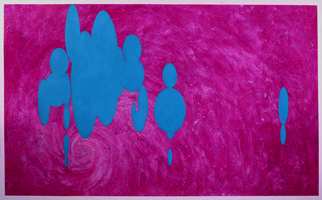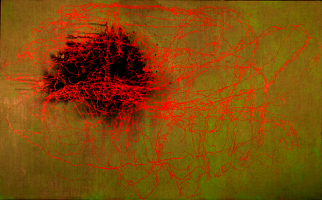
Nature creates its own fluid system of order through change. In my early work I created methods and images that mirrored scientific or philosophical theories using animals’ random movements as a metaphor for empirical thought.
The mice, cats, fish dogs, or horses created “drawings” and by mapping these in a scientific manner a totally synthetic, self-referential order was arrived at.
The "Fractal Ellipse" series also deals with such codification of causality but it also focuses on color, opacity and transparency. Here intuitive observations of natural phenomena such as the seasonal order of plants, clouds, water and light play a primary role.

Set in the golden section format, I use "The I Ching," to 'choose' colors for a mapping line that follows the pattern produced by the accidental nature of the random stains.
“Nicholas Hondrogen seeks to directly challenge traditional notions of pictorial representation. At the outset, the artist demands that we question what we are trained to believe in visual conventions.
In theoretical practice, Hondrogen conflates the ideas of pattern, chance and randomness and causality into a complex amalgam of conceptual underpinning for a statement through his work that is, at once both formalist and sociological... His unsettling depictions contrast with conventional methodologies for artistic illustrations of systems of mechanics and serve as thought maps addressing perception." Ken Bloom, director BMOCA.